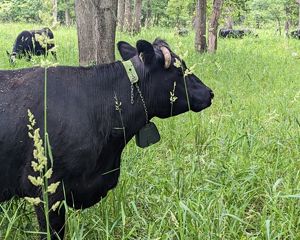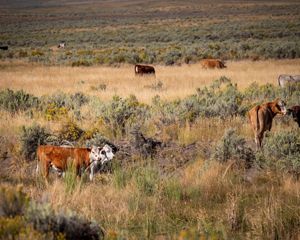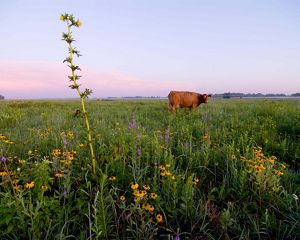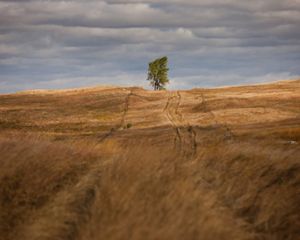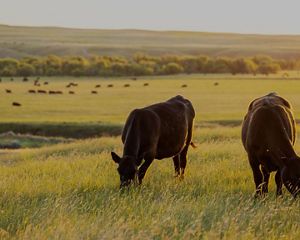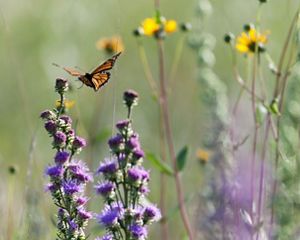North America Regenerative Grazing Lands
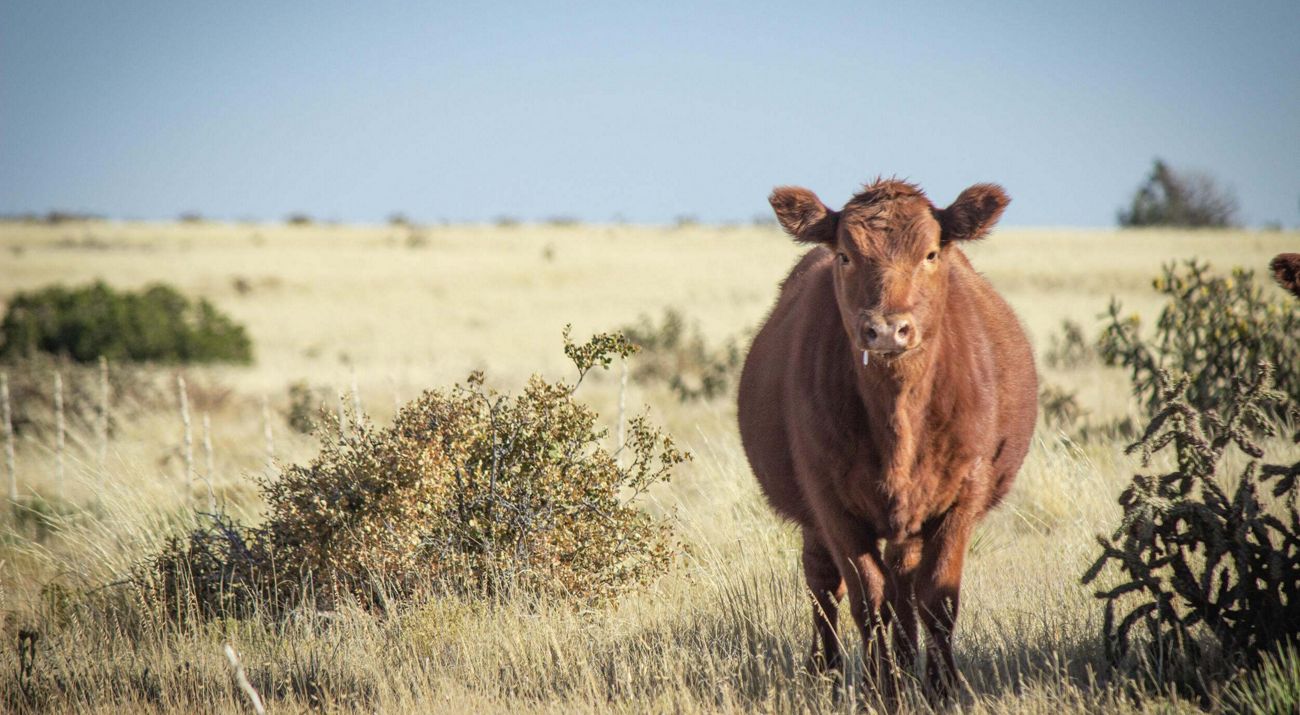
The Nature Conservancy is committed to conserving native grazing lands and safeguarding the cultural and economic well-being of those who rely on them.
North America’s native grazing lands—a suite of ecosystems including grasslands, prairies, shrublands and steppes—have long been the cultural and economic backbone of rural communities, ranching operations and Native Nations. Yet, these iconic lands have been disappearing at an alarming rate over the past century. What remains is at risk of further decline—along with a vast and diverse array of birds, mammals, reptiles, pollinators and other wildlife.
Notably, grasslands are among the least protected and most at-risk ecosystems on the planet. Only 38% of North America’s native grasslands remain, and these lands are at risk from conversion to tillage crops, invasive plants, incompatible management, energy development and urban sprawl. The impact from these threats is particularly evident in the Great Plains, where more than 30 million acres of grasslands have been lost since 2012.
By 2030, TNC’s North America Grazing Lands strategy aims to:
-
240M
Protect and improve 24OM acres of grazing lands
-
57M
Protect 57M at-risk acres from conversion
-
7.3M
Avoid or sequester 7.3M tons of carbon emissions per year
We have only years, not decades, to achieve these conservation targets.
TNC believes that advancing regenerative agriculture solutions is among the essential pathways to reverse the interconnected crises of climate change and biodiversity loss.
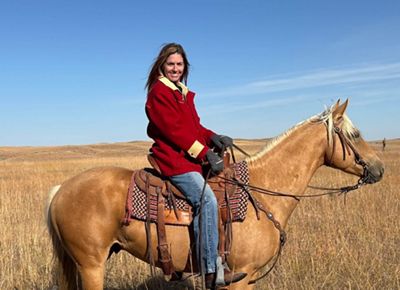
What Is Regenerative Grazing?
In this Q&A, RGL Strategy Co-director Nancy Labbe explores how regenerative grazing can transform ranching into a force for ecological and economic resilience and sustainability.
How We Take Action
For more than 30 years, TNC has built trusted relationships across the beef supply chain—from individual ranchers and collaboratives to companies that source and retail beef products. We are building upon that foundation to increase the pace and impact of our work.
By advancing large-scale business, policy and technological solutions, TNC is working with partners to expand the adoption of regenerative grazing principles. These principles can help ranchers and land managers conserve important lands and waters, revitalize ecosystems, reduce carbon emissions and enhance ranch profitability.
Here's how:
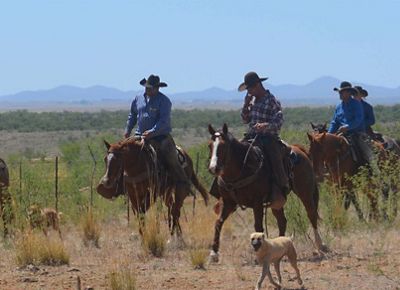
Ranching for Resilience in Arizona’s Empire Valley
Rancher Ian Tomlinson blends tradition and science to protect grasslands, wildlife and water in partnership with conservationists.
Explore Our Work
TNC has worked with ranchers, farmers and the larger agriculture industry throughout the United States for more than 30 years. In 2016, we expanded our work significantly, with emphasis on advancing climate, water and biodiversity benefits while helping livestock producers improve their productivity, livelihoods and resiliency across large landscapes.
With a regional network of more than 100 science, policy and agriculture experts across the United States, our collective knowledge and on-the-ground expertise have uniquely positioned TNC to unite producers, collaboratives, the supply chain, government agencies and other non-government organizations around common sustainability goals. Explore some of our projects below.
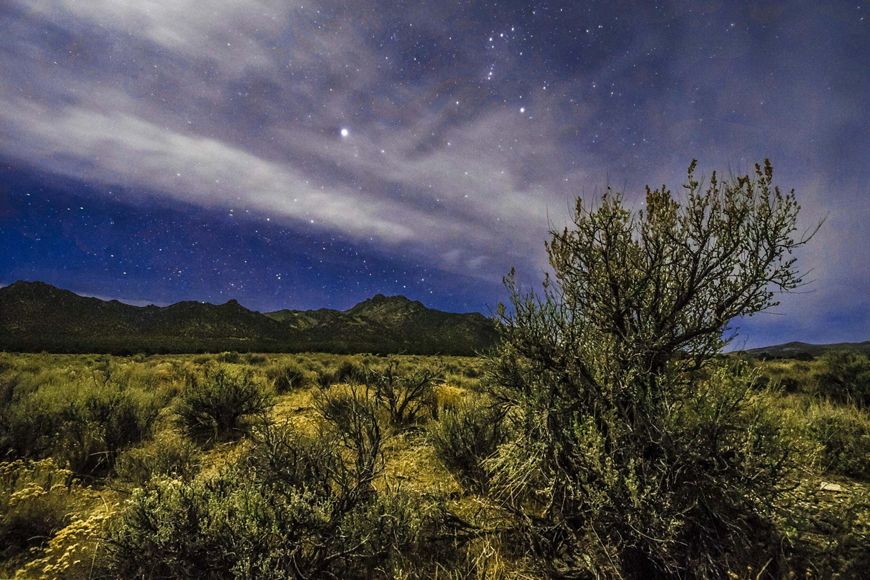
Explore
Our Work
Meet Our Team
The North America Agriculture team is comprised of about 20 staff members and an extensive regional network of science, policy and agriculture experts across the United States, including state-based staff focused on local strategy implementation.
Our team members are highly regarded in their fields, ranging from scientists who regularly publish in peer-reviewed journals, experts who hold leadership positions on the boards of other NGOs and industry initiatives, and professionals who are frequently sought after as keynote speakers and collaborators with industry initiatives. Our team also works closely with colleagues beyond North America to share lessons learned and strategies with TNC projects across the globe.
More Experts
Stay in the Loop.
Get conservation stories, news and local opportunities from where you live.




